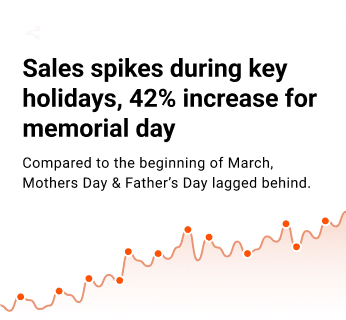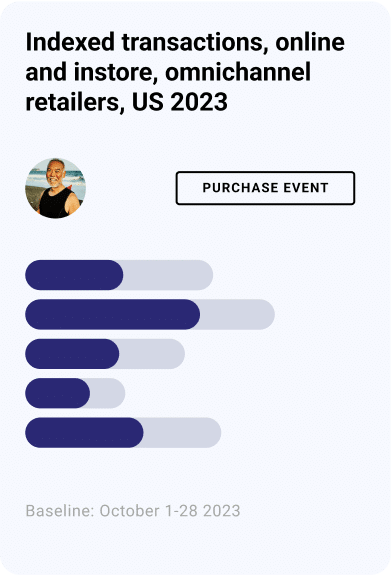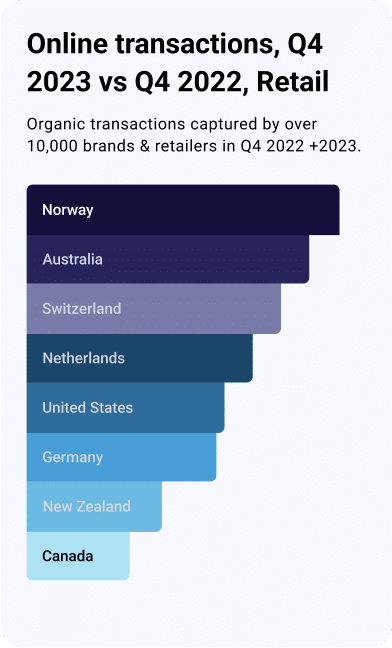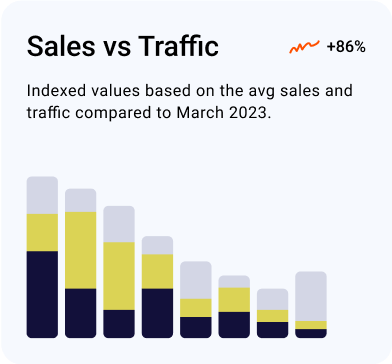Display Advertising
What is display advertising?
Display advertising is defined as visual ads placed on websites, social media networks, or apps. They are typically image, text, or video banner ads that when clicked on, take a user to a website or landing page. Display ads are most often found at the top, sides, and/or bottom of websites and apps.
Display advertising networks: How do they work?
To launch a display advertising campaign, you need a way to access the publishers (the sites and apps on which your ads will be shown). This is usually done via an ad network like Google Display Network, or via a DSP like Criteo. Then, you’ll need to create your ads using your in-house design team, or an external partner.
Lastly, you’ll need to choose how your ads will be targeted. Display advertising offers a variety of targeting options, including the following:
Contextual targeting: This allows advertisers to place ads based on the content and keywords of the website. For example, if you sell cookware, contextual targeting would enable you to show an ad on a recipe website.
Site placement targeting: With this method, advertisers can hand-pick the sites that they want to run ads on.
Audience or interest targeting: Audience targeting enables advertisers to show their ads to groups of people based on a variety of factors, like interests or previous behaviors. You can build similar or “lookalike” audiences with traits similar to those of your best customers, or “in-market” audiences of people actively looking for products or services like yours.
Retargeting: Display retargeting re-engages people who have visited your site or app but then left without taking any action. It is extremely effective for driving conversions and known for its high ROI.
What types of display advertising are there?
The most popular types of display advertising include:
Banner ads
In its most basic form, banner ads are image-based rectangles or squares that link out to a website. They are available in a variety of sizes that used to be based on pixels, like 300×250, or 728×90. However, the Interactive Advertising Bureau (IAB), which develops the industry standards for online advertising, is now recommending a move to flexible ad units that work across multiple screen sizes and responsive websites. These are based on aspect ratio and size range. You can learn more about the new IAB guidelines here.

Interstitial ads
These are typically full-screen ads that overlay the webpage or app that you were originally trying to access. They can be image, text, or video and require users to either click the ad or close it in order to move on.

Rich media ads
These are banner ads that add interest through video, audio, or other interactive elements, like sliders, 360 views, form fields, or questions.
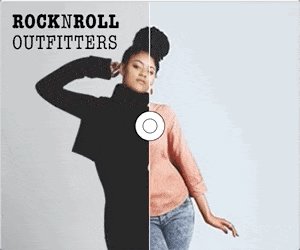
Video ads
As the name implies, these are ads with video. Ideal for capturing attention, branding, and storytelling.

For more examples and information, visit our Ad Formats page.
Sponsored Display Ads
The sponsored display ad is a format offered within retail media which is advertising on a retailer website or app to reach shoppers at the digital point of sale.
Retail sponsored display is the online equivalent of shelf-talkers and point-of-sale displays in a physical retail store. With this format, brands can mix storytelling with features that encourage a purchase, like real-time pricing and add-to-cart buttons.

What are the most common display ad sizes?
In the past, the most common display ad sizes were:
Medium rectangle: 300 x 250 px
Leaderboard: 728 x 90 px
Wide skyscraper: 160 x 600 px
Large rectangle: 300 x 600 px
Mobile leaderboard: 320 x 50
As mentioned previously, the Interactive Advertising Bureau (IAB), which develops the industry standards for online advertising, is now recommending a move to flexible ad units that work across multiple screen sizes and responsive websites. These are based on aspect ratio and size range. You can learn more about the new IAB guidelines here.
How much does display advertising cost?
Display ads are typically priced on a CPM (cost per mille) or CPC (cost per click) model. With a CPM pricing model, you pay a set price per 1,000 impressions. That means you’re paying for ad views, whether they click on your ad or not. CPMs can be as low as $0.30, but typically average around $2i.
A CPC model means that you only pay when someone clicks on your ad. The average CPC range varies by industry, but advertisers can set a max CPC, say $1/click, to keep campaigns on target. The ultimate cost of a display advertising campaign is really up to the advertiser, based on their available budget and the results they’re trying to achieve.
What are the benefits of display advertising?
Display ads remain an integral part of the marketer’s toolbox for these reasons and more:
It works across the full funnel.
Display ads are great for building brand awareness. But they’re also equally effective for driving traffic and increasing conversions. With so many formats and targeting options, they can help advertisers meet a variety of goals.
It works across channels and environments.
Display ads can be deployed across websites, social media, and apps, making them an ideal way to deliver a seamless, cross-channel experience.
It’s cost effective.
The ability to measure in real time (or near real time) and adjust on the fly makes display ads a very cost-effective strategy. If a particular ad or group of ads isn’t performing, changes can be made mid-campaign to optimize and maximize returns.
It’s measurable.
Advertisers can see exactly how many clicks and conversions they received from each display ad campaign and can easily calculate ROI.
Display advertising best practices
Here’s what you need to know to create a successful display advertising campaign:
Keep it simple: Ad creative should be bold, but not busy. Copy should be brief, but impactful. CTAs should be clear and direct.
Personalize with dynamic creative optimization: Choose a display advertising partner that offers dynamic creative optimization technology. This uses machine learning to automatically adjust ad content and creative for each person, based on their preferences and browsing history.
Maximize efficiency with automated bidding: Manual bidding takes a lot of time and attention. Opt for automated bidding, which uses AI technology to adjust CPCs as needed to maintain a specified KPI, such as cost of sale (COS).
Ready to launch your own display advertising campaign?
Learn more about how Commerce Growth can help you achieve your customer acquisition and retention objectives with simple yet powerful automated advertising for the open internet.







